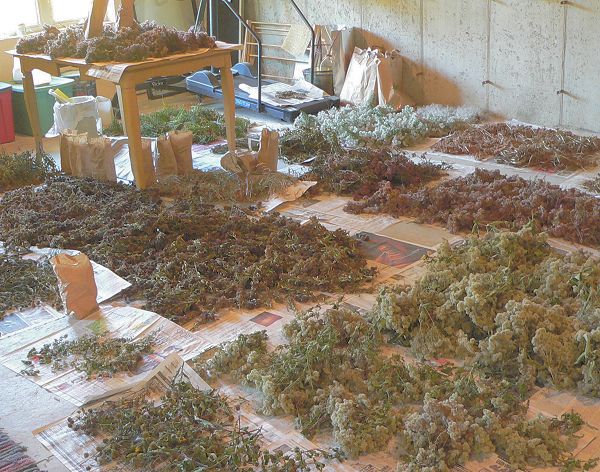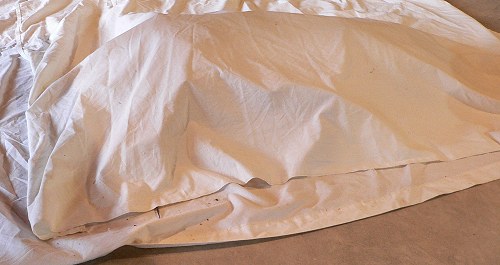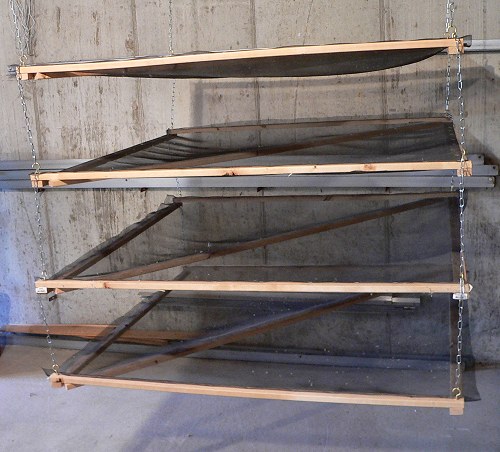I pile most of the seeds loosely on sheets of newspaper and let them dry for at least a couple of weeks. For about a month every fall, every spare inch of our floor is covered with drying seeds.


Most seeds will dry this way, and are easiest to process after they’re dry, but there are a few exceptions.
Some seeds have pods that pop open as they dry and send the seeds flying – a very effective dispersal mechanism – so I cover them with sheets of newspaper or an old bed sheet to keep the seeds contained.

It’s important to have them very spread out with lots of space between them so they don’t get moldy. Sometimes it helps to prop up the sheet with a stick of wood – allowing more air circulation underneath.
Flowering Spurge (Euphorbia corollata), Partridge Pea (Chamaecrista fasciculata, Wild Bean (Strophostyles sp.), and Rattlebox (Crotalaria sagittalis) all eject their seeds so I use this method for drying them.
Spiderwort (Tradescantia ohiensis) has so much water in the stems and flower clusters that I have to take special care that they don’t get mouldy. It helps to dry them on screens, so there’s air circulation all around them. These are the screens I use.

The only problem with this drying rack is that the screens are too large to handle easily and they have a diagonal support piece across the middle which makes it difficult to scoop out the seeds. I hope to make a new rack sometime that has somewhat smaller screens without the diagonal. Then I could tip up the screens and dump the seeds out.
Common Milkweed (Asclepias syriaca), Butterfly Weed (Asclepias tuberosa), and Swamp Milkweed (Asclepias incarnata) are all easier to process when they’re not quite dry. I spread out the pods until a few are just starting to split open, and then pull the seeds out of the pods by hand.
